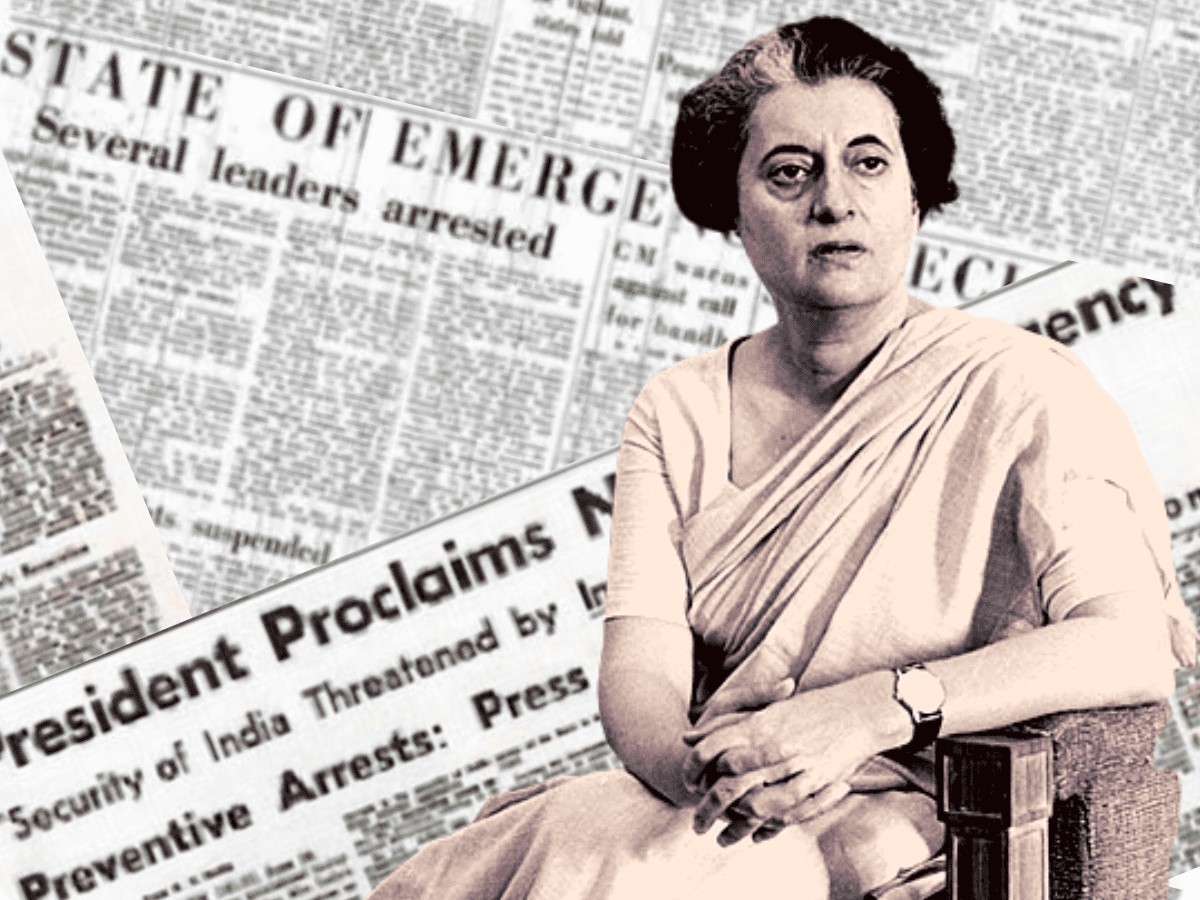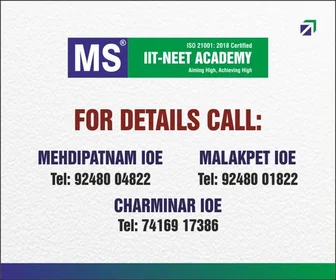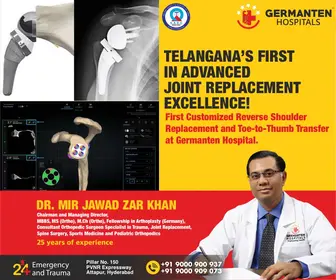
As India marks the Golden Jubilee of the Emergency, it is time to revisit the oft-maligned decision through a different lens, one that examines the threats Indira Gandhi faced and the constitutional measures she invoked.
As 2,000 aerial photographs poured in on the desk of the then United States President John F Kennedy in 1962, no one else was aware of the grave threat to US security posed by the Soviet ballistic missiles positioned in Cuba. On October 22, 1962, US President Kennedy announced the Naval blockade of Cuba, a decision that startled the world. He was dubbed as rash and immature, but Kennedy alone was privy to the enormity of the threat confronting the United States.
Similar was the situation for the then Prime Minister, Indira Gandhi, as reports from the Intelligence and other agencies poured into her desk on June 25, 1975. No one else could gauge the enormity of the threat posed by the Opposition pivot. Soon, the gravity of the impending danger began to sink in on Indira Gandhi. For her, there was no time to lose, and a decision had to be made fast, before the situation slipped out of her hands.
The Baroda Dynamite Case that came to light one year later in June 1976, involving the likes of George Fernandes, C G K Reddy, Viren J Shah, Prabhudas Patwari and G G Parikh, is indicative of the diabolical plans of the Opposition, threatening the very unity and integrity of the nation.
True test of democracy, it is said, is not how governments are formed but how governments are changed. The first peaceful change of government at the Centre in Independent India was at the end of the Emergency in 1977, which established India on the path of democracy.
Opposition Pivot
The organisation working as the Opposition pivot triggered a situation that seriously threatened the very stability and unity of India. Throwing all democratic norms and conventions to the wind, it deliberately resorted to undemocratic and unconstitutional means to usurp power from a duly elected democratic government by destroying democracy.
No government worth its salt will abdicate its moral, political and constitutional responsibility to defend and uphold the Constitution and the Rule of Law. A frustrated Opposition, losing faith in the democratic process, sought to resort to extra-constitutional methods to forcibly topple a duly elected, democratic government of Indira Gandhi.
The greatness of Indira Gandhi is that she did not hesitate to take an extremely unpopular decision of resorting to the imposition of the Emergency, to safeguard national unity and integrity.
That was the supreme sacrifice she made on the spur of the moment. She was more concerned about saving the nation than saving her image. And the media, in concert with the Opposition, chose to run an extremely virulent campaign of vilification and character-assassination to demonise Indira Gandhi.
Indira Orders Polls
Why did Emergency become necessary in the first place? The fact of the matter is that it was the Opposition of the day that triggered the sequence of events, inexorably leading to the declaration of Emergency. But soon after the situation normalised, Indira Gandhi, on her own volition, revoked the Emergency, released political prisoners and ordered fresh elections immediately.
Anyone else in her place would have tried to dispense with elections for good and turn into a dictator. Daughter of Pandit Jawaharlal Nehru, granddaughter of Pandit Motilal Nehru, Indira Gandhi grew up in the lap of Mahatma Gandhi and at the feet of Nobel Laureate Gurudev Rabindranath Tagore. Democracy was running in her blood. And she was determined to save the democracy gifted to the country by the Congress.
The biggest tribute to Indira Gandhi came from former British Deputy Prime Minister Michael Foot. He said if India was held together during the critical juncture from 1966 to 1977, the credit goes to Indira Gandhi.
Freest, Fairest Elections
On January 18, 1977, elections were ordered. It is to her credit that she held the freest and fairest elections ever in the world. With Emergency still in force, she lost her parliamentary seat of Rae Bareli in Uttar Pradesh, her party was wiped out in the largest Hindi-speaking state, and the Congress lost power at the Centre for the first time since Independence in 1947. There cannot be a better example of someone sticking steadfastly to her core commitments, democracy and human rights. Such a free and fair election is unthinkable in contemporary times.
When R K Dhawan had gone to inform her about her losing the election, a relaxed Indira Gandhi, having dinner, was not at all perturbed by the outcome. In the present times, this sounds more like a fairy tale.
Allahabad HC Verdict
The Allahabad High Court verdict on June 12, 1975, became the trigger for the pivot of the Opposition to push ahead with plans for toppling her government, losing all hopes to defeat her in elections. Because they could not defeat Indira Gandhi in a democratic election, they decided to destroy democracy. Neither in the General Election in 1967, nor in 1971, despite forming the Grand Alliance, could the Opposition dislodge the government of Indira Gandhi. Convinced that they cannot ever win an election, they decided to take the battle to the streets.
Giving a go-by to the legal process in the wake of the Allahabad High Court judgment, they ignored the fact that Justice Jagmohan Lal Sinha suspended his own judgment for 14 days, to enable Indira Gandhi to appeal in the Supreme Court. She did move the Supreme Court and even got the Allahabad High Court judgment stayed till the disposal of her appeal.
The organisation that is pivot of the Opposition, drew up diabolical plans to lay siege to Prime Minister’s residence and to Parliament, with the avowed purpose to cripple national life and to bring to standstill all administration.
Diabolical Gameplan
Morarji Desai said in an interview that they will surround the Prime Minister’s residence, so that she cannot come out and no one can go in. Similarly, they will surround Parliament, so that no business can be conducted. Another leader allegedly asserted that if they cannot win by the ballot, they will win by the bullet.
At the rally in Ramlila Grounds in New Delhi on June 25, 1975, a call was given to the Army and Police to Revolt. This was pure, undiluted treason. It is a different matter that the highly patriotic Armed Forces and the Police refused to heed the call.
This was preceded by the ghastly assassination of the then Union Railways Minister Lalit Narain Mishra and the dastardly attempt on the life of the then Chief Justice of India, Justice A N Ray.
Legislators in Gujarat were coerced to resign in order to topple the government. Morarji Desai sat on a fast-unto-death, demanding the dismissal of the Congress Government in Gujarat. Indira Gandhi conceded the demand, owing to his health condition and advanced age, which is rare for a Prime Minister. This exercise was sought to be replicated in Bihar, as well. On the other hand, a prominent leader claimed that in Karnataka alone, they blew up 52 railway bridges.
Why Emergency?
First things first. An emergency is a Constitutional measure that is designed to tackle an extraordinary situation. Persistently, it is sought to be projected as something extra-Constitutional or Unconstitutional.
Emergency is a Constitutional response to anarchic conditions created in the country, in order to bring the nation back on rails. During wars, the External Emergency is invoked. Internal Emergency in the Constitution provides for tackling a war-like situation within the country.
Yes, the Emergency was not without excesses; some state actions were harsh and must be acknowledged. But to reduce the Emergency to only these excesses is to miss the gravity of the crisis that precipitated it.
The Emergency was promulgated late in the intervening night of June 25-26, 1975, and the Union Cabinet endorsed it the next morning on June 26, 1975, ex post facto, which is common practice in a parliamentary democracy.
Later, the Proclamation was tabled in Parliament. During the ensuing debate, the Opposition bitterly criticised the move, as is common in a parliamentary democracy.
Following the debate, Parliament approved the Proclamation of Emergency. Scrupulously, Indira Gandhi went through all the democratic processes, given her commitment to democracy.
Dramatic Day
June 25, 1975, was a day of high drama. In the morning, the then West Bengal Chief Minister Siddharth Shankar Ray was summoned to the Prime Minister’s residence at 1, Safdarjung Road in the Capital. Indira Gandhi briefed Siddharth Shankar Ray of the diabolical plans of the organisation acting as the Opposition pivot.
Ray sought time till afternoon to consider a possible course of action. When he returned, he came up with the idea of invoking Internal Emergency. No one, not even Indira Gandhi, was aware of such a provision in the Constitution. Immediately, accompanied by Siddharth Shankar Ray, Indira Gandhi rushed to the Rashtrapati Bhavan to apprise President Fakhruddin Ali Ahmed of the gravity of the situation and her government’s response to deal with it.
President Fakhruddin Ali Ahmed asked Indira Gandhi to prepare and send him the Draft Proclamation of Emergency. Returning from the Rashtrapati Bhavan, the draft was prepared by late evening and sent to the President. After his signature, late in the night, Emergency was Promulgated.
Constitutional luminary and a leading light of the Anti-Congress Movement, like Nani A Palkiwala, appearing for Prime Minister Indira Gandhi, was devastating in his remarks.
Palkiwala told the Supreme Court that the Allahabad High Court judge, who wrote the judgment, does not know the law. It is like unseating the Prime Minister for breach of traffic law.
Reappraisal of Facts
As this is the Golden Jubilee of the Emergency, it is time for a reappraisal of the situation that led to the Emergency. Indira Gandhi faced enormous flak for it, as a result of a false narrative. Books and films are churned out, dime a dozen, with the calculated aim to sustain the False Narrative and demonise Indira Gandhi, as part of the larger Anti-Congress campaign.
An organisation that did not have any role in the Freedom Struggle now seeks to find its political relevance by borrowing icons like Jayaprakash Narayan, as it lacks credible faces within its organisation.
Allahabad HC Verdict
Justice Jagmohan Lal Sinha found Prime Minister Indira Gandhi guilty on two counts, for non-payment of rostrum charges and non-payment of electricity and loudspeaker charges, besides setting up barricades for Prime Minister Indira Gandhi at Government expense.
Another dispute related with regard to when Yashpal Kapur’s resignation as OSD to the Prime Minister became effective. Yashpal Kapur submitted his resignation from the post of OSD to Prime Minister Indira Gandhi on January 13, 1971, and his resignation was accepted with effect from January 14, 1971. Notification was issued by the Prime Minister’s Secretariat in that connection on January 25, 1971.
Yashpal Kapur was subsequently appointed as election agent of Indira Gandhi on February 4, 1971, the date on which his signed form regarding such appointment was submitted to the Returning Officer in Indira Gandhi’s parliamentary constituency of Rae Bareli.
But, in his judgment, Justice Jagmohan Lal Sinha held that Indira Gandhi had held herself out as a candidate for election in the media from December 29, 1970, and, as such, Yashpal Kapur’s continuance in his official post as OSD to the Prime Minister constituted electoral malpractice by Indira Gandhi. On its very face, it looks far-fetched, credulous and legally untenable.
This Allahabad High Court judgment was challenged in the Supreme Court. The Apex Court granted a Conditional Stay, allowing Indira Gandhi to continue in the office of Prime Minister, pending disposal of her appeal.
Elections were six months away. All that the Opposition had to do was to build up a campaign that would have reached a crescendo by the time of the elections. That is the democratic and Constitutional way forward. Instead, the organisation that turned itself into the Opposition pivot chose to set itself on the course of usurpation of power, without facing elections.
Persisting Excesses
The so-called Emergency excesses are the excesses that happen before, during and after the Emergency. In fact, horrendous and ghastly things do happen, Emergency or no Emergency. Worse things happened, with utter impunity, under the nose of the very administration that wallows in the False Narrative on Emergency.
Extreme brutality takes place, with unerring regularity. And, this government walks away Scott free, even with barbaric crimes like mob-lynching, targeted bulldozing of homes and business establishments, gangrapes and burning alive of victims, jailing of journalists and bloggers, vandalism against boys and girls in pubs and on festive occasions and murders of public intellectuals and social activists in cold blood, where there is no case even, not to speak of punishment.
The mythical villains of Emergency are the pride of the organisation that orchestrates and sustains the False Narrative on Emergency. Jagmohan, the man behind Turkman Gate demolitions, is the icon of this very organisation that promotes this fictitious narrative.
Far from punishing him, it idolised and rewarded him, making him its brand ambassador. Who can forget the calculated ethnic cleansing in the Kashmir Valley under his aegis in 1990?
Indeed, such a false narrative is calculated to tarnish and denigrate the fair name of
Indira Gandhi. The vindictive, virulent whisper campaign of vilification and character-assassination continues unabashedly to this day, in order to sustain its own False Narrative, bordering on fiction, with chilling impact.
Shah Commission
How does Justice Shah know what is happening in the political world? And what are the forces at work, wanting to destroy a developing economy? If a judge is competent to decide on these issues, then why have the political class, democracy and elections, if judicial persons are to pontificate on all matters political? Such terms of reference of an inquiry commission cannot be part of any judicial inquiry.
Part of this Fake Narrative is the Shah Commission Report. The Shah Commission was supposedly a judicial body, but raised extra-constitutional questions. For instance, demanding to know from Indira Gandhi the threat assessment and what was shared with the President.
The satisfaction of the Prime Minister of a serious threat to the nation was now reduced to the satisfaction of a former Judge on whether or not conditions existed for imposing Emergency.
Ordinarily, no person even remotely connected to the legal world would raise such issues, which are not to be revealed or shared in the public domain.
There was ostensible hostility of the Shah Commission with Indira Gandhi, which militates against the very principles of an independent inquiry commission.
Justice Shah had delivered the judgment against Prime Minister Indira Gandhi in the Bank Nationalisation case. In the normal course, such a judge would have recused himself from heading such a Commission of Inquiry. But Justice Shah not only accepted it but also showed outright hostility towards Indira Gandhi with his partisan approach. He would allow anyone and everyone ready to depose against Indira Gandhi, but would openly refuse to take on record any evidence going in her favour. He would quietly allow loud jeering against Indira Gandhi during the proceedings, but would not countenance any such act from the supporters of Indira Gandhi and would throw them out.
It is high time these deliberately malicious, mischievous misinformation campaign is roundly tackled. It is time to revisit Emergency and disabuse oneself of the neatly packaged lies often peddled as the truth.
Disclaimer: The views and opinions expressed in this article are those of the author and do not necessarily reflect the official policy or position of the organisation.



